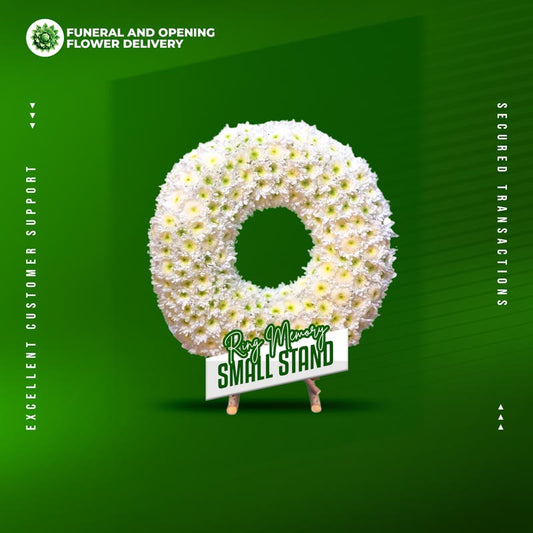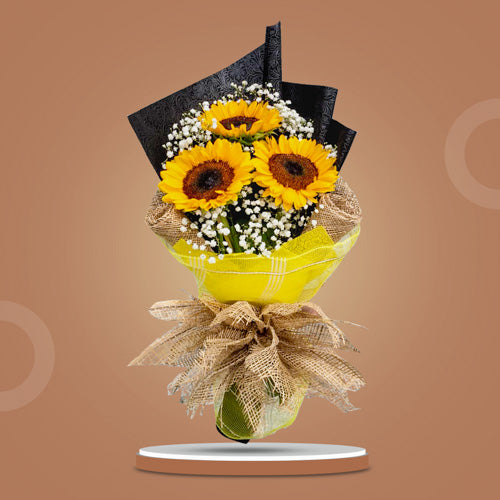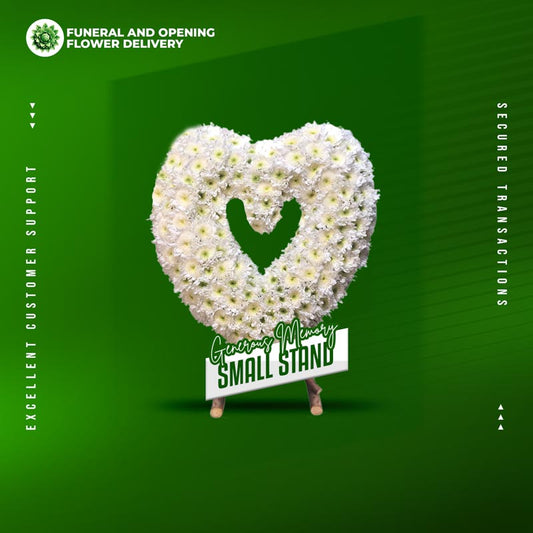How to Preserve the Freshness of Flower Bouquets?
A Guide on How to Preserve the Freshness of Your Flowers?
Experiencing the sheer thrill of holding a newly arranged bouquet in your hands is an unmatched delight. Whether you've been gifted a carefully curated flower delivery or decided to indulge yourself, the captivating sight and enchanting fragrance of fresh flowers evoke a sense of joy and wonder.
When you find yourself in possession of such a splendid bouquet, it's only natural to want to preserve its beauty and vitality for as long as possible. While the age-old practice of placing a penny in the water might not yield optimal results, fret not! There are a plethora of effective tips and tricks at your disposal to ensure the extended lifespan and freshness of your cherished blooms. In this article, we will delve into invaluable plant care techniques that will empower you to enhance the longevity and allure of your floral arrangements.
It is not uncommon to be well aware of the rapid deterioration of a bouquet once it graces your home. If left exposed to the elements, the flowers are bound to wither and dry out swiftly. However, fear not, for there is a simple yet effective solution: the mighty vase. By nestling your precious bouquet in a well-chosen vase, you can significantly prolong its freshness and vibrancy. Placing your bouquet in a vase is undoubtedly a key strategy to ensure its longevity. However, it is important to note that a few essential steps need to be taken before immersing your fresh flowers in the vase. Allow us to guide you through the fundamental actions you must undertake to preserve the vitality and allure of your beloved blooms:
Give the Stem a Snip
When a flower is harvested and included in a bouquet or arrangement, an intriguing process begins at the cut stem. Similar to our own bodies forming a scab to protect a wound, the stem swiftly initiates a recovery mechanism. The area where the stem was severed undergoes a hardening and sealing process, guarding against potential infections and dehydration.
However, this natural response also means that if you place the bouquet directly into a vase, the flowers may not receive an optimal amount of water and nutrients. To ensure their continued vitality, it is crucial to make a fresh cut to the stems shortly before placing the flowers in the vase. You can accomplish this by using garden shears or any sharp implement that can cleanly slice through the stem. It is advisable to cut the stems at an angle, as this prevents them from lying flat on the bottom of the vase and potentially impeding water absorption.
But don't consider the initial cut as a one-time task; to maximize water uptake and extend the lifespan of your blooms, it is beneficial to re-trim the stems every few days. By doing so, you prevent the accumulation of air bubbles that may have entered the stems while they were temporarily exposed to the air. These air bubbles can hinder the efficient absorption of water and nutrients by the flowers, so regular trimming ensures their unimpeded hydration and sustenance.
Cut Extra Leaves and Remove Below-Water Foliage
To maintain the health and longevity of your flowers, it's important to properly trim and prune them. Start by using your garden shears to remove any leaves that would be submerged below the waterline of the vase. Leaves in the water can decompose quickly and create a breeding ground for harmful bacteria, which can adversely affect the flowers. By removing these lower leaves, you minimize the risk of bacterial growth and promote a cleaner environment for your blooms.
If you have received a bouquet featuring roses, you can take an extra step to encourage their full blooming. Carefully remove the outer guard petals from each rose. These petals are usually tougher and may have slight blemishes, but by gently peeling them away, you allow the inner petals to unfurl beautifully.
Regular pruning is essential to prevent the spread of bacteria and maintain the overall health of your flowers. Check your bouquet daily for any dead, dying, or drooping leaves and petals, and promptly prune them away. Removing these decaying parts not only enhances the appearance of the arrangement but also eliminates potential sources of bacteria that could harm the remaining flowers. Stay vigilant in your inspection and pruning routine to ensure that your flowers stay vibrant and free from infection.
Place Them in the Water Quickly
To expedite the process and prevent the formation of air bubbles in the stems, you can cut the flower stems underwater. This technique ensures that the stems remain fully submerged and allows for uninterrupted water uptake. Simply fill a basin or sink with water and submerge the stems as you cut them with sharp garden shears or a knife. This method helps maintain the hydration of the flowers and promotes optimal nutrient absorption.
After arranging your bouquet, it's important to trim the stems once again before placing them in a vase. This step ensures that the freshly cut ends can readily absorb water and nutrients. Make sure to cut the stems at a slight angle, as this increases the surface area for water uptake. Immediately transfer the flowers to a vase filled with fresh water, ensuring that all the stems are fully immersed in the water. This will provide the flowers with the hydration they need to stay vibrant and prolong their lifespan.
By cutting the stems underwater and promptly placing the flowers in water after arranging them, you create favorable conditions for the flowers to thrive and maintain their freshness for an extended period.
The Vase You Choose Matters
It is essential to choose the right vase for your flowers, as not all vases are created equal. The type of flowers you have will determine the ideal vase for them. For heavier flowers with shorter stems, it is recommended to use a low vase that provides ample space for the flowers to bloom and spread out. This allows the weightier blooms to be supported and displayed effectively. On the other hand, lighter-colored flowers can be arranged in a taller vase, which complements their delicate beauty.
Regardless of the type of vase you choose, it is important to ensure that your flowers have enough room to breathe and grow within the vase. Avoid overcrowding the blooms, as this can lead to damage and hinder their ability to absorb water and nutrients. Give each flower enough space to showcase its unique beauty and allow for proper air circulation.
Remember, selecting the right vase that suits the specific characteristics of your flowers will not only enhance their appearance but also contribute to their overall longevity and health.
Water Wisely and Change Them Regularly
Once you have prepared the flowers by trimming the stems, removing excess leaves, and selecting an appropriate vase, the next step is to fill the vase with water. Water is essential for the survival of flowers, as they require an adequate supply to stay hydrated and vibrant. Failure to provide enough water can result in the wilting and eventual death of the flowers.
Fill the vase with room temperature water, taking into consideration the size of the vase and the amount of water needed to submerge the stems. Additionally, you may choose to add flower food to the water, which can provide essential nutrients and prolong the life of the blooms. Mix the flower food thoroughly with the water, ensuring that it is fully dissolved before adding the flowers to the vase.
It is important to be mindful of bacteria, as they can negatively impact the longevity of your flowers. To combat this, clean the vase thoroughly every two to three days, replacing the water and optionally adding fresh flower food. Additionally, during each water change, trim approximately half an inch off the stems. This step helps to remove any blocked or damaged parts of the stems, allowing the flowers to better absorb water and nutrients.
By following these steps and maintaining a clean and nourishing environment for your flowers, you can ensure their longevity and enjoy their beauty for an extended period of time.
Keep ‘Em Cool. Direct sunlight, heat, drafts, and fruit should all be avoided
Contrary to popular belief, flowers that have been cut and placed in a vase do not require direct sunlight to thrive. In fact, it is best to keep them away from open windows and direct sunlight. Excessive heat and exposure to sunlight can accelerate the deterioration of cut flowers.
To ensure the longevity of your flowers, it is important to keep them in cool areas, away from heat sources such as heating ducts, furnaces, fans, and air conditioning vents. Heat can cause the flowers to wilt and dry out more quickly. Therefore, choose a location that provides a moderate temperature and avoids direct heat.
In addition to heat, it is also advisable to keep your flowers away from fresh fruits. Ripening fruits emit a small amount of ethylene gas, which can be detrimental to the lifespan of cut flowers. By separating your flowers from fresh fruits, you can prevent any potential harm caused by the ethylene gas.
By keeping your flowers in a cool and protected environment, away from direct sunlight, heat sources, and ripening fruits, you can help extend their freshness and enjoy their beauty for a longer period of time.
You Can Make Your Own Flower Food
The small packets that often accompany floral arrangements play a vital role in keeping flowers fresh. These packets contain various components that help sustain the flowers' vitality. They typically include sugar, which provides a source of nourishment for the flowers, citric acid to maintain a low and acidic pH level, facilitating water absorption and reducing wilting, and antibacterial powder to combat bacterial growth.
If your floral arrangement didn't come with a packet or if you have run out of them, you can create your own solution each time you change the water or before cutting the stems. Here's a simple recipe: Add a few drops of bleach or a clear liquor like vodka or gin to prevent bacterial growth, mix in a few drops of clear soda or superfine sugar to provide nutrients to the blooms, and finally, crush a vitamin C tablet and add it to lower the pH level.
While it's true that fresh flowers have a limited lifespan, there are measures you can take to extend their longevity. By following these tips on how to keep flowers fresh, you can enjoy your beautiful bouquet for a longer period of time. Don't let your lovely flowers go to waste. Put these ideas to the test and see how long your bouquet can last! If you want to try these tips, you can order a same-day flower delivery from Glorist and experience the joy of keeping your cut flowers fresh.




1 comment
Thank you for this. Insights are very helpful!